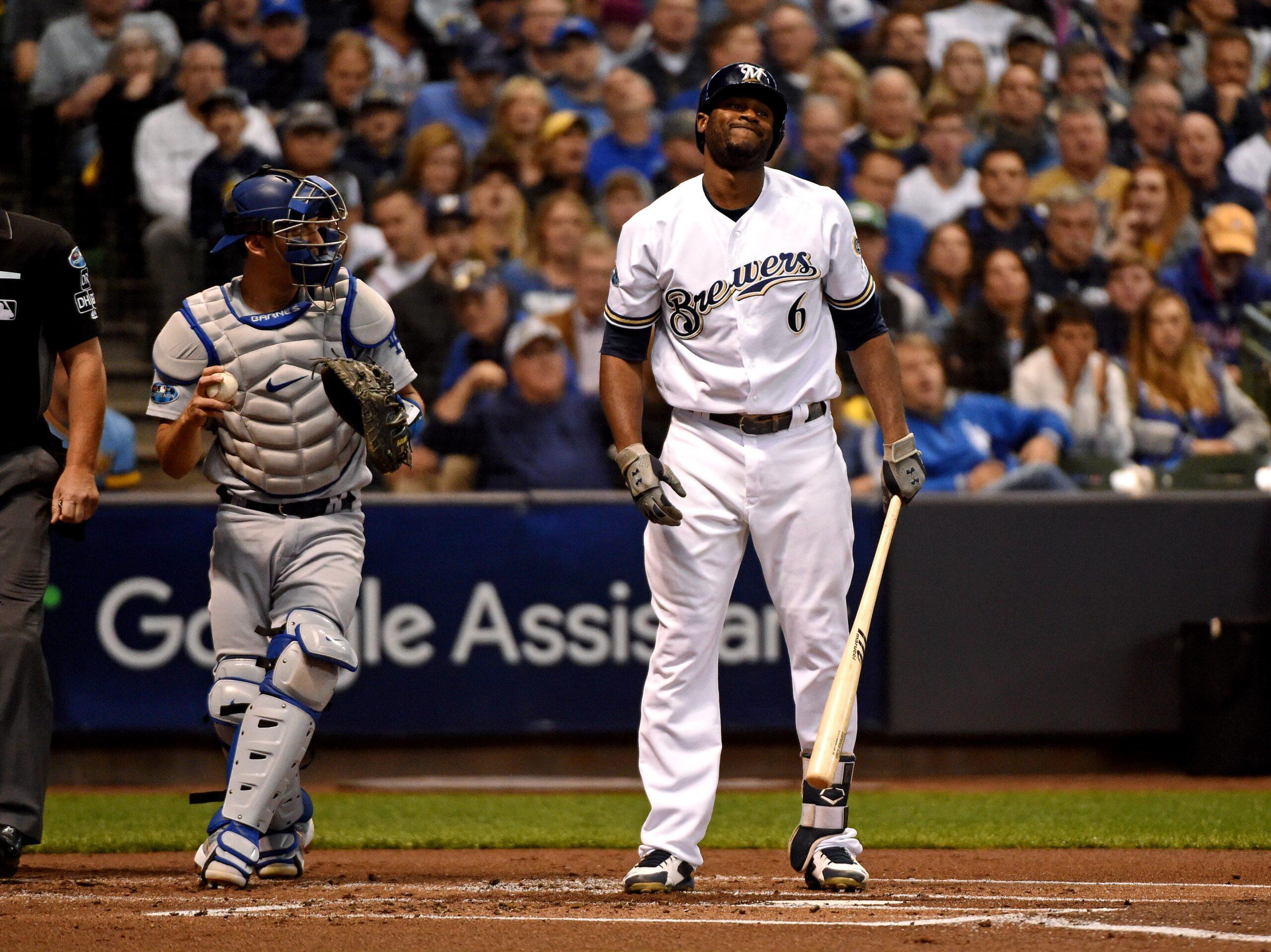
As recently as Thursday, the day after the Dodgers took a 3-2 series lead against Milwaukee in the NLCS, few baseball prognosticators would have foreseen the Brewers taking a lead in a game that could have sent them to the World Series. As recently as mid-September, when a loss to Cincinnati knocked Milwaukee 3 1/2 games back of the Cubs in the NL Central, few would have foreseen the Brewers winning their division for the first time since 2011. And as recently as March, on the eve of the 2018 season, few would have foreseen Milwaukee making the playoffs at all.
But the Brewers did all of those things and almost made it one step further, and had they held their early lead against the Dodgers in Saturday’s Game 7, they would have become the most unlikely World Series participant since the 2014 Royals. Cody Bellinger homered, however, and Yasiel Puig danced his way around the bases, and the Dodgers returned to the Fall Classic with a 5-1 win. The Miller Park fans jeered at Manny Machado and groaned at the Dodgers homers and then basically stopped cheering as the final out grew closer. But their team has no reason to feel shame for their Game 7 exit; Milwaukee should be a contender again next year, and this time not an underrated one.
The Brewers’ advantages start at the top of the lineup, where Christian Yelich and Lorenzo Cain led NL position players in WAR this season, but they extend throughout the whole roster, which looks to remain mostly intact. Among the team’s key contributors this season, starter Wade Miley is a free agent, but he’s joined exclusively by midseason additions: Gio González and Curtis Granderson are free agents as well, while Mike Moustakas and Joakim Soría will likely reach the market because they have infrequently exercised mutual options for next season. Returning to the team, meanwhile, are the top eight Brewers in plate appearances in 2018 and 14 of the top 16 in innings pitched (in addition to Miley, Brent Suter probably won’t return after undergoing Tommy John surgery this summer).
Part of the reason so many teams from the 2017 postseason played in October again in 2018—four of six division winners repeated, the Cubs went from a division winner to a wild-card squad, and both the Yankees and Rockies earned wild-card berths in both years—is that they returned a historically, inordinately high percentage of their contributors from 2017. Milwaukee was an outlier this season, but fits that encouraging profile for 2019, and after engaging in all manner of pitching experimentation in both the regular season and playoffs, manager Craig Counsell will have his full slate of dominant relievers to maneuver next year.
Nothing, of course, is guaranteed in baseball, and success in one season doesn’t automatically portend equal or greater success the following year. Development isn’t linear, whether that means not progressing as far after a surprisingly deep playoff run, as happened to the Yankees this season, or missing the postseason entirely after a breakout year; after their 2011 NLCS run, the Brewers didn’t return to the playoffs until 2018. And Milwaukee does have areas of concern for next year, along with playing in a deep division with the likely favorite Cubs, resurgent Cardinals, and sneakily competitive Pirates and Reds.
Yelich probably won’t produce a Judgian home run rate next year, even if he will remain a top overall player, which is a potential problem because Milwaukee’s offense with MVP-brand Yelich wasn’t as powerful as its place in the NLCS might suggest. Not counting pitcher hitting, fellow LCS participants the Dodgers, Astros, and Red Sox all ranked in the top five in wRC+ this season while Milwaukee was a distant 11th, and the Brewers ranked 12th in runs per game. If Yelich and Jesús Aguilar take steps back in 2019 from career years, Milwaukee’s offense might look more middling than strong, or at least need improvements from the likes of Orlando Arcia or a hot rookie season from top prospect Keston Hiura to compensate.
In that vein, the entire starting rotation besides Jhoulys Chacín is a giant, bold-faced question mark. Jimmy Nelson didn’t pitch at all in 2018 after undergoing shoulder surgery in September 2017, and 2017 contributor Chase Anderson pitched poorly enough this year that he didn’t make the playoff roster. Brandon Woodruff and/or Corbin Burnes, who project as starters but pitched mostly out of the bullpen this season, could help if they return to the rotation, but the Brewers would do well to add a starter or three this winter.
If any team has revealed itself to be interested in making meaningful upgrades over the winter, though, it’s the Brewers. In a historically slow market last offseason, Milwaukee rowed against the tide, acquiring its two MVP-caliber outfielders—Yelich by trade, Cain as a free-agent signee—in the span of a few hours in January. That approach’s unimpeachable success should embolden the Brewers to be just as aggressive this offseason. They certainly have the payroll space to do so: Not counting players due for arbitration raises, Milwaukee has just $65.5 million committed to next season’s roster. Cain and Ryan Braun are the only players slated to earn eight figures (though Jonathan Schoop might hit that mark in arbitration); Yelich’s contract renders him one of the most owner-friendly bargains in the majors.
Perhaps Milwaukee makes a play for Arizona lefty Patrick Corbin, the top free-agent starter if Clayton Kershaw doesn’t opt out, or maybe they dig into a robust farm system to trade for Seattle’s James Paxton or a Mets ace. The Brewers aren’t just flexible with their bullpen configurations; they have plenty of transactional options, too, and they have the ability and incentive to improve a roster that, after all, finished just one game short of reaching the World Series.
Bolster the rotation with a few high-quality starters—or make the bullpen so strong that the rotation again doesn’t matter—and boost the offense at the margins, and the Brewers will be right back in the thick pile of NL contenders. Their stars, progressive strategy, and front-office smarts were all on display in this wonderfully surprising playoff run, and none of those ground-level advantages will go away before March 2019.
Milwaukee never tore down its roster, or tanked, or really even rebuilt in the contemporary sense of the term. And because it wasn’t blessed with hordes of top-five picks and big-market payroll space—the enviable combination enjoyed by both Chicago and Houston—its future outlook isn’t quite as bright as those of the last two World Series winners. But not profiling as a long-term “superteam” doesn’t mean the Brewers can’t play like one for a season or two. They just have to keep building, and hope that they won’t look back in seven more years and think that 2018 was their best, and closest, chance.


